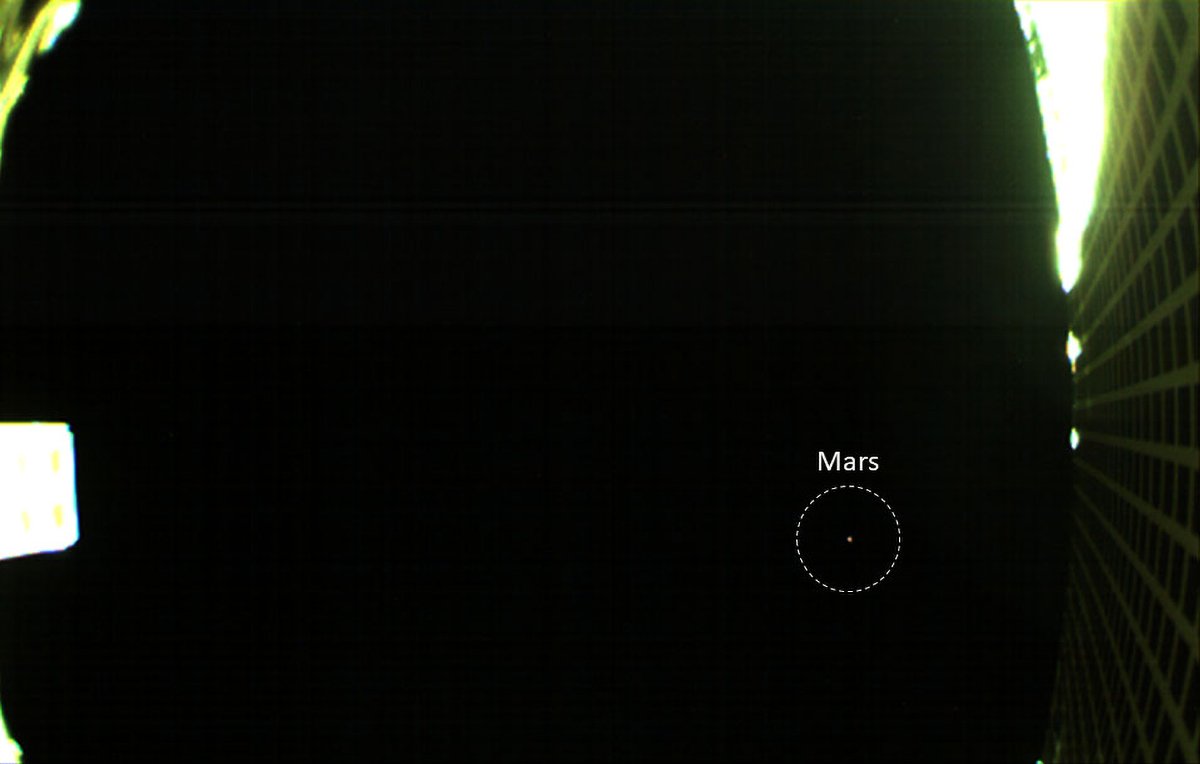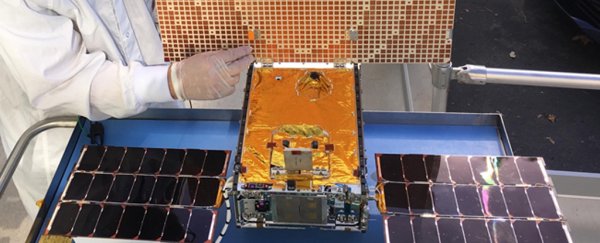Mars is a sizable planet about nine times the mass of our moon. The latest scientific research suggests Mars, despite looking like a giant desert, may harbour enough subsurface water and warmth to support microbial life today.
But against the deep, dark backdrop of space, the rusty-red world looks as humble and insignificant as Earth.
NASA underscored this stark reality with a newly released image taken by a tiny satellite that's closing in on Mars.
The picture was taken from about 8 million miles away by one of two backpack-sized CubeSats, collectively known as Mars Cube One, or MarCO.
 (JPL-Caltech/NASA)
(JPL-Caltech/NASA)
The two satellites – MarCO-A and MarCO-B, nicknamed by their creators "EVE" and "Wall-E," respectively – launched on May 5. They hitched a ride with NASA's much-larger, car-size InSight lander, which is scheduled to land on Mars on November 26.
The MarCO satellites are officially the smallest spacecraft ever flown past the moon. They're also a crucial test for NASA to see how small it can shrink its spacecraft, and how far it can send them into the solar system.
The tinier a deep-space satellite can be, the more of them the space agency can afford to build and launch, as well as faster and more often (since powerful rockets are still very expensive).
Travelling at a speed of about 6,200 miles per hour (10,000km/h), the two CubeSats have spent six months and logged some 248 million miles (400 million km) "chasing" Mars as the planet orbits the sun.
NASA expects them both to slip into orbit as InSight lands, helping relay unprecedented data about the robot's landing back to Earth in (relative) real-time.
Until then, MarCO's systems are being intermittently tested. On October 2, MarCO-B swung Mars into view during camera, rotation, and communications test and snapped the photo below.
"We've been waiting six months to get to Mars," Cody Colley, who manages the MarCO mission for NASA's Jet Propulsion Laboratory, said in a press release.
"The cruise phase of the mission is always difficult, so you take all the small wins when they come. Finally seeing the planet is definitely a big win for the team."
The picture was taken from 8 million miles (13 million km) away – cosmically close, since the red planet is an average of 140 million miles (225 million km) from Earth.
Yet Mars still looks like an infinitesimal red dot in the image. (The objects on the periphery are parts of the spacecraft.)
Previously, the MarCO team honored Carl Sagan's "Pale Blue Dot" image by using MarCO-B to photograph Earth from 621,371 miles (1 million kilometres) away. Earth looked similarly feeble in that image.
On the flipside, the image shows Mars is not an infinite plane like the rest of the universe.
To someone like Elon Musk, who is trying to use his rocket company, SpaceX, to build a giant reusable spaceship capable of reaching the red planet, the picture might make Mars look that much more conquerable.
This article was originally published by Business Insider.
More from Business Insider:
